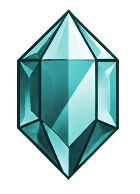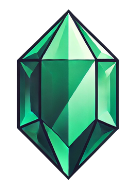Forging Legendary Guardians: Designing Memorable Protectors for Your Adventures
Introduction to Legendary Guardians in Tabletop RPGs
In the expansive worlds of tabletop role-playing games, guardians serve as critical backdrops for quests and adventures. These characters, often defined by their loyalty and courage, possess the unique ability to protect, guide, and challenge players. As a game master (GM), creating memorable guardians can enhance storytelling, add depth to the narrative, and ultimately enrich the gameplay experience.
This post delves into various methods, approaches, and considerations for designing legendary guardians that resonate with players and make significant impacts on the unfolding story.
Understanding the Role of Guardians
Before delving into design specifics, it's crucial to clarify what a guardian represents in your narrative framework. Guardians can take many forms: mentors, protectors of ancient secrets, steadfast allies in battle, or even formidable foes.
Their primary responsibility is to create tension and excitement, serving either as gatekeepers to knowledge, allies in dangerous situations, or rivals testing the heroes' mettle. Great guardians resonate with the themes of courage, sacrifice, and the greater good, and they often embody the qualities that the players aspire to or challenge in themselves.
Establishing Background and Motivation
A well-developed guardian must have a rich backstory that informs their motivations, challenges, and relationships with other characters. Consider following these steps to flesh out their backgrounds:
-
Origin Story: Every guardian should have an origin story that explains how they arrived at their current position. Did they once live a normal life before tragedy struck? Were they trained by a legendary figure? Such details can humanize them and make their struggles relatable.
-
Goals and Aspirations: Every guardian has personal ambitions. Maybe they aim to redeem a past failure or seek eternal vigilance against an ancient evil. These aspirations can create twists and turns within the narrative, serving as hooks that engages the players.
-
Relationships: The connections guardians share with other characters are vital. They might have ties to the players, their enemies, or other factions in the game. Infuse their backstories with relationships that showcase their heroic or tragic traits.
-
Tragic Flaws: Giving your guardian a flaw or weakness adds complexity. Perhaps they struggle with a fear of failure due to past events, creating moments for characterization and genuine conflict.
Crafting Unique Abilities and Skills
One of the most exciting aspects of designing a guardian is the introduction of unique abilities and skills that reflect their personality and story. Consider these components:
-
Special Abilities: Guardians may possess abilities that set them apart, such as the ability to heal, impart wisdom, or summon protective shields. These skills should align with their background and add diversity to their character.
-
Limitations: A formidable guardian becomes more appealing when they also have limitations. Perhaps they can only use their protective abilities a limited number of times, or certain circumstances can weaken them. This makes encounters more dynamic and engaging.
-
Combat Style: If your guardian is inclined towards physical combat, develop a signature fighting style. Whether it is a knight wielding an ancestral sword or a rogue using agile tactics, this uniqueness can lead to exciting confrontations.
-
Magical or Artisanal Craft: If your guardian has magical tendencies, you'll want to define their spellcasting abilities and the lore behind it. Alternatively, for non-magic users, consider crafting unique items that tell a story when used in-game.
Infusing Guardians with Personality
A significant element of creating memorable guardians is endowing them with distinct personalities. Players appreciate well-rounded characters who feel real. To build a guardian with a compelling personality, take note of the following:
-
Core Traits: Outline key personality traits. Are they brash and bold, or wise and patient? This will inform their decisions and interactions with players.
-
Quirks: Quirks can make a guardian feel more relatable. Whether it's a particular speech pattern, obsessive love for a pet, or an unusual bravery ritual, these details help form emotional bonds with players.
-
Emotional Depth: Guardians who display a range of emotions can foster player investment. Allow them to show joy, frustration, sadness, and humor throughout the campaign. This human side helps players form connections with the characters.
-
Moral Ambiguity: Engage players with morally complex guardians who can wrestle with difficult choices. Perhaps their objective conflicts with party goals, challenging players to question their own moral compass.
Engagement in Key Narratives
Legends are born from compelling stories. Guardians should be integral to key plot lines and narratives throughout the campaign. Here's how to successfully integrate them:
-
Thematic Presence: Consider how the guardian ties into central themes of the game. Their existence should reflect the larger conflict or element that the party engages with.
-
Catalysts for Unfolding Events: Use the guardian as a catalyst for various adventures. They can send the party on missions, provide leads, or create conflicts that pit players against powerful foes.
-
Interactive Challenges: Instead of merely rewarding players with information or items, challenge them. Create scenarios where players must prove their worth to earn the guardian’s respect or assistance.
-
Personal Quests: Personal quests can deepen player connections. By involving characters in the guardian's story arc or their struggle, you can introduce emotional stakes that elevate the gameplay experience.
Physical Appearance and Iconography
The visual representation of your guardian can be impactful. Their design should mirror their essence and narrative significance. Consider these approaches:
-
Symbolic Aesthetics: Create an appearance that reflects their role. Use armor, colors, and weapons that symbolize their prowess, culture, or profession. Incorporate elements or symbols of their backstory into their attire for added intrigue.
-
Distinct Features: Consider unique physical traits that make them stand out. Facial scars, unusual eye colors, or other distinctive features can create a lasting impression.
-
Representation of Growth: As your campaign progresses, allow physical changes to mirror emotional growth or failures. This visual evolution adds richness to the character's narrative.
-
Legendary Artifacts: Provide guardians with unique items or relics that enhance their abilities or symbolize significant moments in their past. The stories behind these artifacts can serve as excellent tying points for character interactions or player quests.
Conclusion: Elevate Your Game with Legendary Guardians
The guardians you create will breathe life into your campaign. By investing the time to establish compelling backstories, integrating unique abilities, and infusing personality traits, you craft essential elements that deepen player engagement and enrich the overall narrative.
Through these legendary protectors, players will find themselves inspired, challenged, and mesmerized by tales of heroism and sacrifice. By remembering the multifaceted roles these guardians undertake, GMs can guarantee that their players embark on unforgettable adventures filled with meaningful encounters and personal growth. Let your creativity flourish, and watch as these guardians become iconic in the annals of your tabletop universe.



